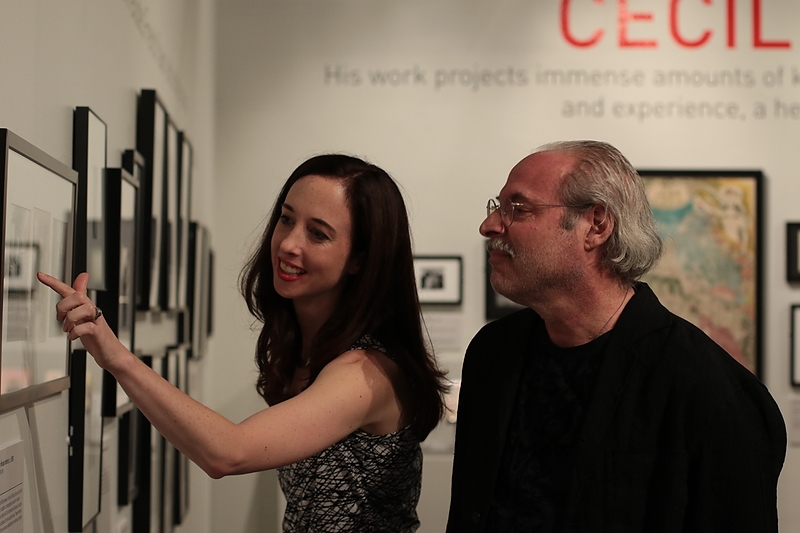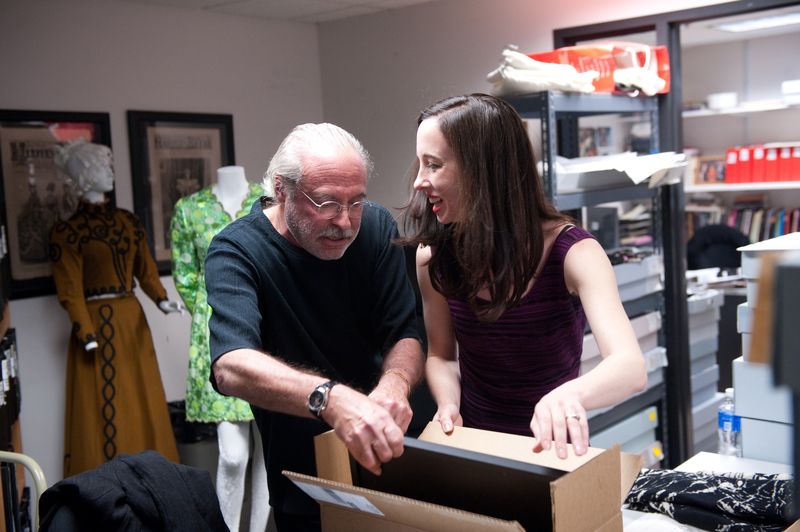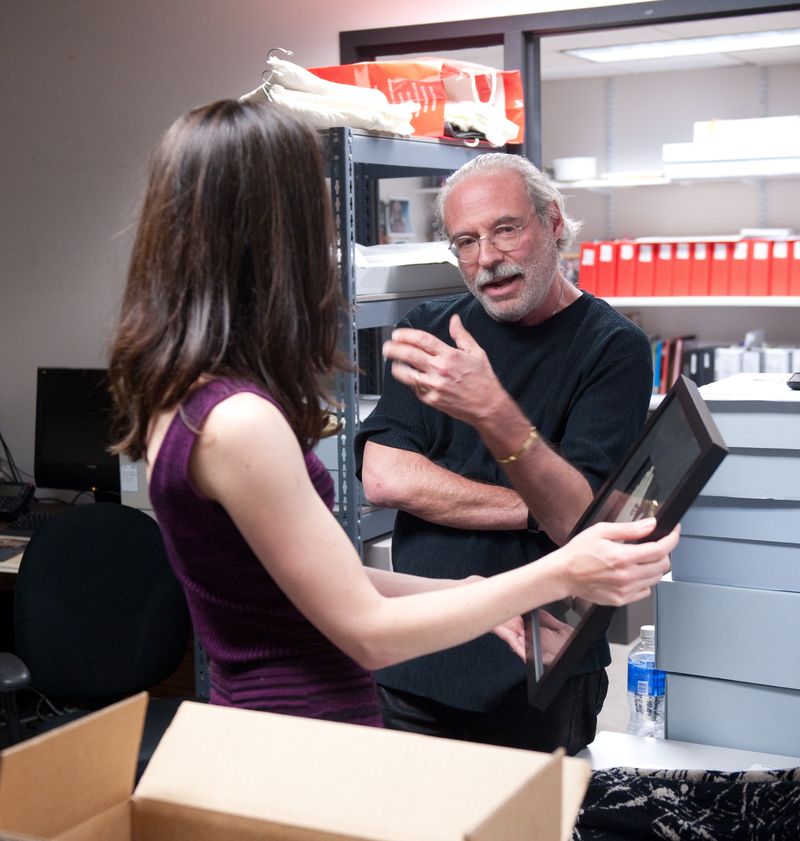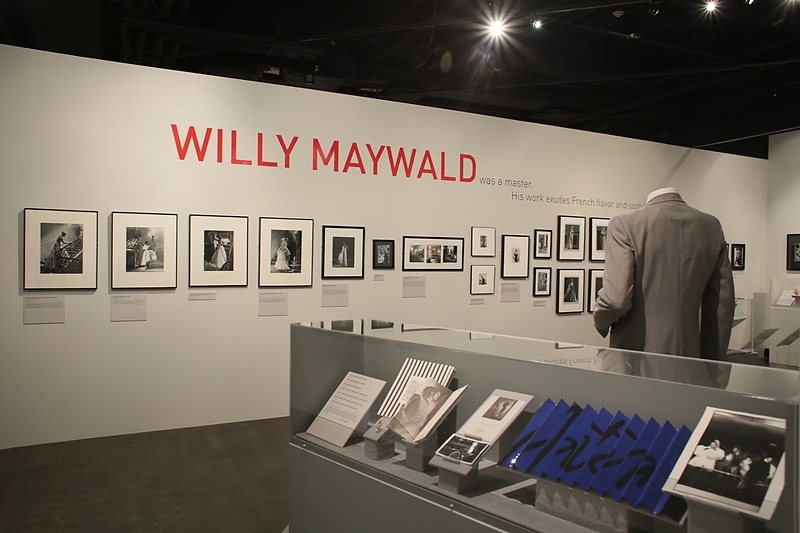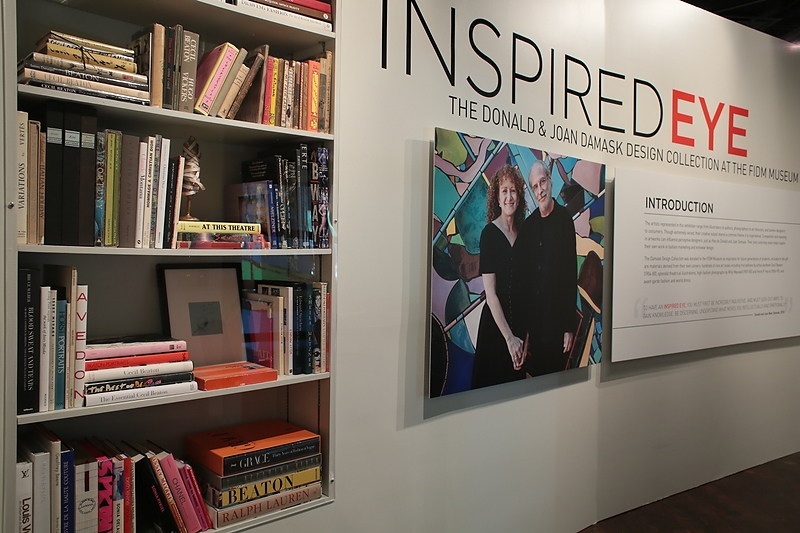A Conversation with Donald Damask
In 2013, Donald and Joan Damask donated an amazing collection to the FIDM Museum including fashion photography, theatrical costume sketches, scenic renderings, rare art books, vintage clothing, and world dress. A selection from their donation is currently displayed in the FIDM Museum & Galleries in Inspired Eye: The Donald and Joan Damask Design Collection at the FIDM Museum. In this blog post, Associate Curator Christina Johnson interviews Donald Damask about inspiration, his career, collecting, and what he’d like students to take away from the exhibition.
CJ: What does the term Inspired Eye means to you?
DD: To have an inspired eye, you must first be incredibly inquisitive, must experience some sort of travel, and must seek out ways to gain knowledge no matter how orthodox that journey may be. The hardest part is the need to understand what moves you. You must be in touch with your senses, your emotions, and your "ever refining” taste level. Inspiration is just a culmination of your daily life. You draw on it every minute of every day. At this point in my life, seeking out inspiration is what I do every day, just for the sheer enjoyment of it all.
CJ: You were Vice President of Marketing at Henri Bendel during the 1990s, responsible for everything from developing advertising campaigns to inviting new designers to show in boutiques, to planning launch parties, visual presentation, store planning, and decorating the store for the holidays. What inspired your work at Bendel’s?
DD: Two very “inspiring” people. First, Mr. Henri Bendel himself and also Ms.Geraldine Stutz—the Bendel’s president during the 1970s and 1980s. Mr. Bendel brought great style and fashion to the store. He designed dresses, accessories, brought the best French couture there, and designed the now-famous brown and white striped “cosmetic bag” branding. Mr. Bendel was a big thinker and knew what turned on his very “tony” clientele.
Ms. Stutz brought whimsy, sophistication, fun, and an amazing sense of style to the store. It was almost like the Bendel client was part of fashion cult from somewhere. Her brainchildren in the store were the Street of Shops, the Fancy Gown/Dress Department, Wonderful World of Stephen Burrows, Zandra Rhodes, Zoran, Lee Bailly, Frank McIntosh, Bendel black soaps, the Bendel “scented” vetiver candle, and amazing furs by Viola Sylbert. Bendel’s had the most creative, inspired stylish, clever windows displays in all of New York.
Mr. Bendel and Ms. Stutz together created a mecca for the most stylish women, the most wealthy women in New York. The Henri Bendel shopper was such a breed unto herself. Most inspiring!
CJ: You’ve managed to build up an amazing collection of Cecil Beaton materials. Can you talk more about what drew you to his work?
DD: I started collecting anything Beaton in 2000 when I was the director of marketing at The Body Shop in London. I was astonished at Beaton’s proficiency in everything he touched and created—whether it be a fine artist, designing scenery and costumes for the ballet and theatre—one such being My Fair Lady—fashion design, fabric design, as a very prolific author of his many memoirs and tomes on the royal family, and his very colorful close circle of friends. Beaton did everything well—and did it with the utmost restraint, taste, and elegance. I related to him and he was truly inspirational to me!
CJ: And what about the Willy Maywald collection you gave to our museum—can you tell me more about that?
DD: When I was VP of marketing at Henri Bendel, I used some of Maywald’s images to market the opening of the Bendel Fifth Avenue store and the Boston store. I loved the elegance, understatement, atmosphere, and technical virtuosity. I bought my first three Maywald photographs at that time and then I kept searching everywhere for more. They’re really rare, but I’ve managed to create quite a collection.
CJ: What should students take away from this exhibition?
DD: You can’t create anything in a vacuum. You need to seek inspiration from somewhere, anywhere. Keep your eyes and minds wide open. Take time to think and process what you see. Students must believe that constantly seeking inspiration will make their own creative process more personal and impactful. I would love the students to leave this exhibition with a sense of how our very personal gift to the FIDM Museum is Joan’s and my collection of inspirations through the years. Things we needed to buy and live with for almost 40 years—and held so near and dear to us.
